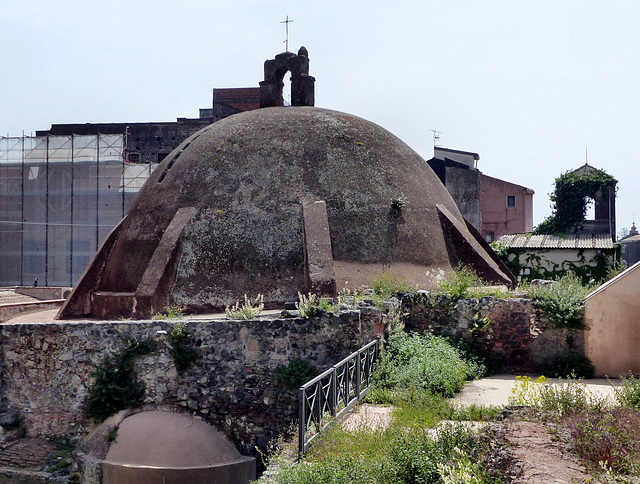Catania - Teatro Romano
Catania - Tabaccchi
Naxos - Pulpo
Naxos - Spaghetti Carbonara
Casalvecchio Siculo - Santi Pietro e Paolo d'Agrò
Casalvecchio Siculo - Santi Pietro e Paolo d'Agrò
Casalvecchio Siculo - Santi Pietro e Paolo d'Agrò
Casalvecchio Siculo - Santi Pietro e Paolo d'Agrò
Casalvecchio Siculo - Santi Pietro e Paolo d'Agrò
Casalvecchio Siculo - Santi Pietro e Paolo d'Agrò
Casalvecchio Siculo - Santi Pietro e Paolo d'Agrò
Casalvecchio Siculo - Santi Pietro e Paolo d'Agrò
Casalvecchio Siculo - Santi Pietro e Paolo d'Agrò
Brolo - Stella Del Mare
Brolo - Stella Del Mare
Cefalù
Cefalù - Duomo di Cefalù
Cefalù - Duomo di Cefalù
Cefalù - Duomo di Cefalù
Cefalù - Duomo di Cefalù
Cefalù - Duomo di Cefalù
Cefalù - Duomo di Cefalù
Cefalù - Duomo di Cefalù
Catania - Santa Maria della Rotonda,
Catania - San Nicolò l'Arena
Catania - San Nicolò l'Arena
Catania - Monastero della Santissima Trinità
Catania - The Shining
Catania - Chiesa San Giuseppe al Transito
Catania - Castello Ursino
Catania - Market
Catania - Palazzo degli Elefanti
Catania - Cattedrale di Sant'Agata
Catania - Cattedrale di Sant'Agata
Syracuse - Castello Maniace
Syracuse - Duomo di Siracusa
Syracuse - Duomo di Siracusa
Syracuse - Duomo di Siracusa
Syracuse - Duomo di Siracusa
Syracuse - Duomo di Siracusa
Syracuse - Duomo di Siracusa
Syracuse - Tempio di Apollo
Syracuse - San Tommaso al Pantheon
Trattoria Pizzeria Al Castello Donnafugata
Castello di Donnafugata
Location
See also...
Keywords
Authorizations, license
-
Visible by: Everyone -
All rights reserved
-
105 visits
Catania - Santa Maria della Rotonda


Sicily, the largest Mediterranean island, has a long history, that starts around 8000 BC, but later there were Phoenician, Carthaginian, Greek and Roman periods. After the Roman Empire had fallen apart the Vandals tried to take over the island but failed. Finally, the Ostrogoths took possession.
Mid of the 6th century Sicily was conquered by troops of the Byzantine Empire. After the advent of Islam, Sicily got attacked by the Arab forces. Raids seeking loot continued until the mid-8th century.
A Muslim army was sent to the island in 827 but met with much resistance. So it took a century to conquer it and even later revolts constantly occurred
In 1038 the Byzantines invaded the island supported by Norman mercenaries, led by Roger. In 1072, after the siege of Palermo, most of Sicily was under Norman control. Roger´s son Roger II raised the status +of the island to a kingdom in 1130. During this period, the Kingdom of Sicily was prosperous and powerful,
The court of Roger II became melting out of culture from Europe and the Middle East. This attracted scholars, scientists, artists, and artisans. Muslims, Jews, Greeks, Lombards, and Normans cooperated and created some extraordinary buildings.
In 1186 the last descendant of Roger, Constance of Sicily married Emperor Henry VI, the second son of Barbarossa. So the crown of Sicily was passed on to the Hohenstaufen Dynasty. Frederick II, the only son of Constance, was crowned King of Sicily at the age of four in 1198. He became "Stupor Mundi", one of the greatest and most cultured men of the Middle Ages.
-
The complex is home of important archeological finds. Pre-existing traces of Eneolithic and Greek age have been observed here. Between the first and the second century AD a vast thermal plant was built, which remained in use until the 6th century, when it got transformed into the church "Santa Maria della Rotonda"in the Byzantine era.
From the ninth century on, a large cemetery area was built among the ruins of the baths. This was intensely used until the 16th century .
Mid of the 6th century Sicily was conquered by troops of the Byzantine Empire. After the advent of Islam, Sicily got attacked by the Arab forces. Raids seeking loot continued until the mid-8th century.
A Muslim army was sent to the island in 827 but met with much resistance. So it took a century to conquer it and even later revolts constantly occurred
In 1038 the Byzantines invaded the island supported by Norman mercenaries, led by Roger. In 1072, after the siege of Palermo, most of Sicily was under Norman control. Roger´s son Roger II raised the status +of the island to a kingdom in 1130. During this period, the Kingdom of Sicily was prosperous and powerful,
The court of Roger II became melting out of culture from Europe and the Middle East. This attracted scholars, scientists, artists, and artisans. Muslims, Jews, Greeks, Lombards, and Normans cooperated and created some extraordinary buildings.
In 1186 the last descendant of Roger, Constance of Sicily married Emperor Henry VI, the second son of Barbarossa. So the crown of Sicily was passed on to the Hohenstaufen Dynasty. Frederick II, the only son of Constance, was crowned King of Sicily at the age of four in 1198. He became "Stupor Mundi", one of the greatest and most cultured men of the Middle Ages.
-
The complex is home of important archeological finds. Pre-existing traces of Eneolithic and Greek age have been observed here. Between the first and the second century AD a vast thermal plant was built, which remained in use until the 6th century, when it got transformed into the church "Santa Maria della Rotonda"in the Byzantine era.
From the ninth century on, a large cemetery area was built among the ruins of the baths. This was intensely used until the 16th century .
- Keyboard shortcuts:
Jump to top
RSS feed- Latest comments - Subscribe to the comment feeds of this photo
- ipernity © 2007-2024
- Help & Contact
|
Club news
|
About ipernity
|
History |
ipernity Club & Prices |
Guide of good conduct
Donate | Group guidelines | Privacy policy | Terms of use | Statutes | In memoria -
Facebook
Twitter

Sign-in to write a comment.